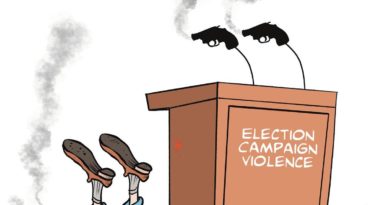EDITORIAL: Slum’s poor lose again
EDITORIAL COLUMN
It is not too difficult to figure out who will win and who will lose in the government’s plan to transform the capital’s oldest and largest slum into a commercial district, complete with a new “Bangkok landmark”.
As real estate developers and investors set to compete for handsome business opportunities associated with the project in Klong Toey district, about 12,500 low-income families who have lived there for generations will be forced to evacuate and rent tiny rooms in new condominium buildings or move elsewhere.
–THIS SPACE BELOW IS RESERVE FOR YOUR ADVERTISEMENT –
Next year, the Port Authority of Thailand (PAT), which owns the vast project area of 2,353 rai, will call for auctions of lucrative property development contracts including 30-year public-private partnerships.
The plan has been in the pipeline for over three decades. The PAT early this year announced that it would go ahead with the project. On Tuesday, Deputy Transport Minister Atirat Ratanasate threw his support behind it, recommending that construction start as early as next year.
Part of the project will be dedicated to the development of a new “commercial zone”, accommodating various trade activities including logistics, imports and exports.
–THIS SPACE BELOW IS RESERVE FOR YOUR ADVERTISEMENT –
Half of the current port area will be handed over to a real estate project by the Chao Phraya River to host a luxury shopping complex, business centres, shops and other commercial spaces.
At the edge of the area is a small plot of land dedicated to constructing a “smart community”, where four 25-storey condominium buildings will be built.
Each of these slum-dwelling families will be offered a 33-square metre living unit in these high-rises. But they will have to rent them.
With 6,144 units in these buildings, the new living complex can only support half of the slum’s current population.
–THIS SPACE BELOW IS RESERVE FOR YOUR ADVERTISEMENT –
Those who opt out of this choice will be offered small plots of land in Bangkok’s suburban Nong Chok area, though many have said it is too far away and too remote for them to live there.
Alternatively, they can just take compensation and move somewhere else.
Some residents and observers have already raised concerns that these are not practical options for them.
Given that the majority of the residents are extended families, the condominium units will almost certainly be too small.
Some residents said the size of the units should be expanded, otherwise not many of them will move in.
–THIS SPACE BELOW IS RESERVE FOR YOUR ADVERTISEMENT –
The PAT can draw on previous experience from 1997, when it evicted some of the slum dwellers and built flats for them.
But those flats were left unoccupied because each living unit was too small, and thus uninhabitable for the evicted families.
The PAT and the government should recognise that these communities have made the area their home since 1967, helping to build the Klong Toey port and becoming part of the local labour force.
The aim should not be to maximise commercial benefits in the area, which experts say would risk flooding Klong Toey with businesses to the detriment of the local quality of life.
Instead, this project should be more inclusive, catering to both business development as well as the needs of local residents.
Otherwise, Klong Toey will end up as just another landmark for the affluent and middle class, while its poor residents face a future without homes.
EDITORIAL
BANGKOK POST EDITORIAL COLUMN
–THIS SPACE BELOW IS RESERVE FOR YOUR ADVERTISEMENT –










